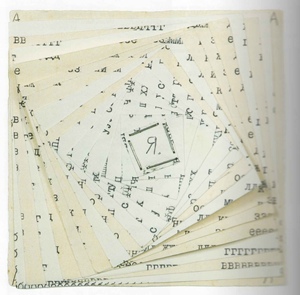Thursday, 7 March 2012, 18.00, OSA Archivum, Arany Janos 32., Budapest 1051
Central European University, Budapest
In the period between Stalin's death and the collapse of the Soviet Union, a historically unique situation prevailed in Russia regarding the technical and media conditions for the production of art and literature. Non-approved authors were cast back into a pre-Gutenbergian situation. Excluded from the state-run publishing channels and monopolised print media, writers and artists established their own spaces of self-publication in Samizdat. Beyond the state institutions, specific forms of subcultural existence were developed: manuscripts and typescripts circulated in a few copies, and readings of poetry and performances were organized; all this played an important role in the process of artistic self-organization.
On the basis of my experiences with the exhibition “Praeprintium” (Staatsbibliothek zu Berlin, Neues Museum Weserburg Bremen) and my work on the audiovisual archive of Moscow Conceptualism, I will discuss the media specificities of Samizdat which have been neglected for a long time.
Sabine Hänsgen, Ph. D. is currently Visiting Professor at the Humboldt-Universität zu Berlin and she has held teaching positions at several universities in Germany (in Bielefeld, Bremen and at the Ruhr-Universität Bochum). Since the 1980s she is a member of the Moscow art group Collective Actions and she has been collecting archival materials about unofficial art in the USSR, widely displayed on exhibitions. In 1998-2001 she organized with Georg Witte the exhibition Präprintium. Moscow Samizdat Books. She co-curated the exhibitions Samizdat. Counterculture in Central and Eastern Europe (Akademie der Künste, Berlin, 2000, displayed at the Millenaris Park in Budapest in 2004) and Subversive Practices. Art under Conditions of Political Repression, 60s-80s (Württembergischer Kunstverein Stuttgart, 2009). She recently received a working grant from the the Igor Zabel Association for Culture and Theory.
The event is conceived as the second part of the Samizdat lecture series initiated by Valentina Parisi (EURIAS Junior Fellow, CEU IAS Budapest) in collaboration with the Institute for Advanced Studies at CEU, Open Society Archive and the European Institutes for Advanced Study Fellowship Program



 Druckversion
Druckversion Seite weiterempfehlen
Seite weiterempfehlen